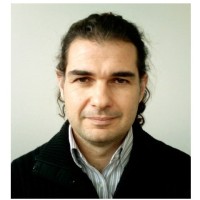
Prof Marco Martorella received his Laurea degree (Bachelor+Masters) in Telecommunication Engineering in 1999 (cum laude) and his PhD in Remote Sensing in 2003, both at the University of Pisa.
He is now an Associate Professor at the Department of Information Engineering of the University of Pisa where he lectures “Fundamentals of Radar” and “Digital Communications” and an external Professor at the University of Cape Town where he lectures “High Resolution and Imaging Radar” within the “Masters in Radar and Electronic Defence”. He is a regular visiting Professor at the University of Adelaide and at the University of Queensland in Australia.
He is author of about 150 international journal and conference papers, three book chapters and a book entitled “Inverse Synthetic Aperture Radar Imaging: Principles, Algorithms and Applications”. He has presented several tutorials at international radar conferences and organised a special issue on Inverse Synthetic Aperture Radar for the Journal of Applied Signal Processing. He is a member of the IET Radar Sonar and Navigation Editorial Board, a senior member of the IEEE and a member of AFCEA.
He is also chair of the NATO SET-196 on “Multichannel/Multistatic radar imaging of non-cooperative targets”. He has been recipient of the 2008 Italy-Australia Award for young researchers, the 2010 Best Reviewer for the IEEE GRSL and the IEEE 2013 Fred Nathanson Memorial Radar Award.
His research interests are mainly in the field of radar imaging, including passive, multichannel, multistatic and polarimetric radar imaging.



